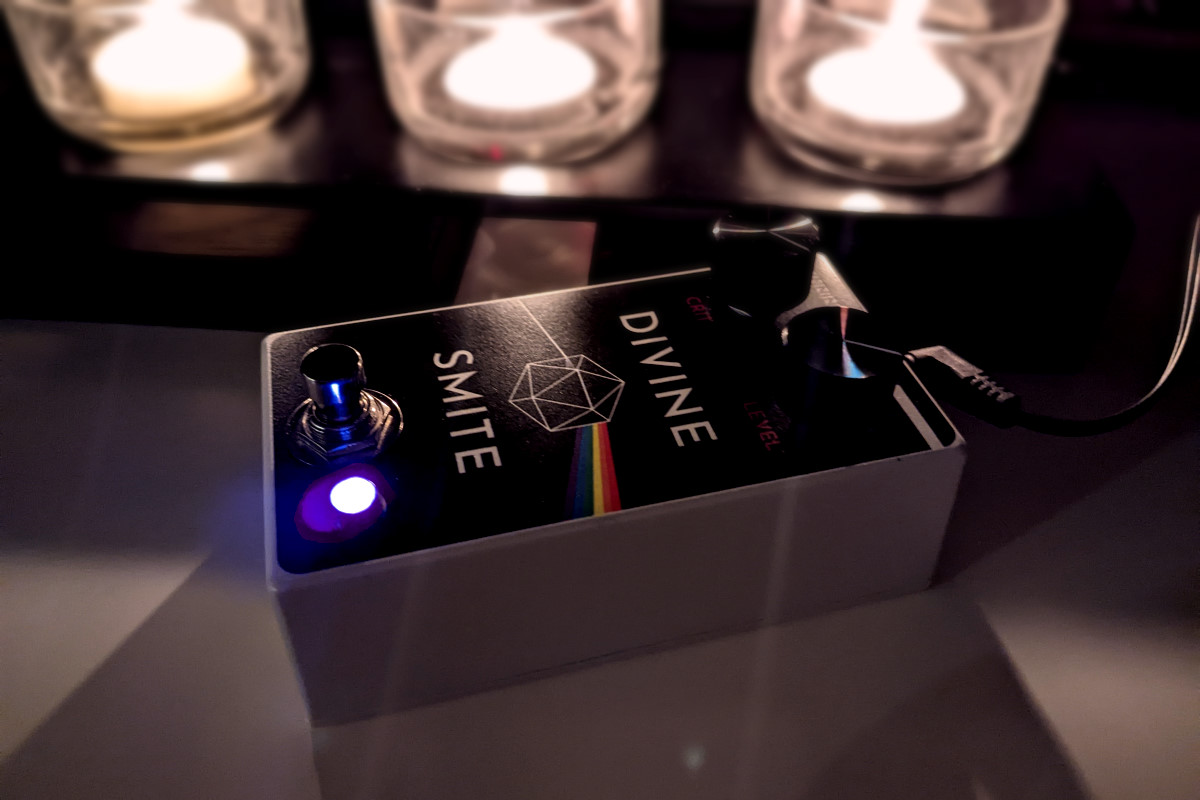

Paladin, Please
The greatest and best character class in Dungeons & Dragons is the paladin. Paladins are warriors bound by an oath and imbued with spiritual power to vanquish their enemies.
The term “paladin” was originally associated with medieval French legends. The Paladins were Charlemagne’s twelve most honored knights, roughly analogous to the Knights of the Round Table in the British tradition. Perhaps the most famous of Charlemagne’s Twelve Peers was Roland (which makes this aside vaguely pedal-related, given that Roland makes BOSS). For a long time, my only exposure to the word was from when my dad would spontaneously break into the theme song from Have Gun—Will Travel.
In the game, paladins are usually heavily armed and armored combatants who follow a deity that provides them with limited magical abilities. I didn’t grow up playing D&D, but my understanding is that in the old days, you had to play a paladin as a goody two-shoes, or your character would risk supernatural punishment limited only by your Dungeon Master’s imagination. It could be interesting to play a lawful good Paladin, although I imagine it could also bog down the game if you had to perform a citizen’s arrest every time your rogue tried to pick a lock. In the current version of the game, the rules are more flexible, and you can make a paladin who is compelled by a lot of things other than the abstract idea of “good,” including fun stuff like vengeance.
Paladins can supposedly cast spells, but I can tell you that mine spends almost no time creating zones of truth or performing b’nai mitzvah, and mostly uses his spell slots for the class feature of Divine Smite (to the point where I just refer to them as “smite slots”). Divine Smite deals extra injury to your opponents when you’ve already hit them with your sword or whatever. It’s one of the few things in D&D where the decision to use it can come after you know the outcome of a dice roll, so it always works, and it can be wonderfully devastating to your foes.
As wonderfully devastating as this pedal, which has a ridiculous amount of gain.
Details
I didn’t really want to make this pedal. I ordered parts for a different pedal from Thailand and they weren’t shipping. When I placed the order, they said that they were closed for a holiday, but they always say that and usually ship the next day regardless. It dragged on for so long that I began researching Thai holidays, but couldn’t find one that seemed like it would be relevant. It was almost Chulalongkorn Day, when the Thai people celebrate the King of Siam from 1873-1910, who was the inspiration for The King and I. I’m getting to know all about you, Thailand. In the end, it was my own fault (I failed to click an approval on the order) but by the time I figured that out, I was getting the shakes pretty bad and had to build something. It turned out that I had the parts on hand to build this.
It’s in the style of an EQD Acapulco Gold, which is basically two LM386s chips slamming into each other. I had the parts because the LM386 is, by far, the IC that I know the best, and I always have some around. It’s what’s in my Potentially Broken Fuzz and my One Watt of Fury amplifier, and since it’s practically an entire guitar amp on a chip, was used in all of the Smokey amps that I built years ago. The LM386 has 20x gain by default. That’s just basic amplification to get a tiny guitar signal bumped up to where it can make a speaker move, and will sound clean-ish. When you connect pins 1 and 8 together, it shoots up to 200x gain and starts introducing distortion, which is something that many guitar players enjoy. In this pedal, there’s one LM386 set to 200x going into another LM386 set to 20x, for a total of 4,000x, which is absurd.
Did I experiment with running at 40,000x? Of course I did. It’s a little noisy. At a mere 4,000x, it’s still in the realm of what could be recognized as a guitar, but probably more appropriate for a genre called “sludge” or “doom” or “sludge doom.” That’s not necessarily my thing, but it is entertaining in small doses. I added a potentiometer on the input to calm it down, which is a common mod. I think it’s about the same thing as turning down the volume on your guitar, but it provides options. So far, I’ve left that knob wide open.
Vital Stats
Sound
It’s so much.
The following sound clip is Serial No. 1 > Divine Smite > SansAmp GT2. I apologize in advance.




